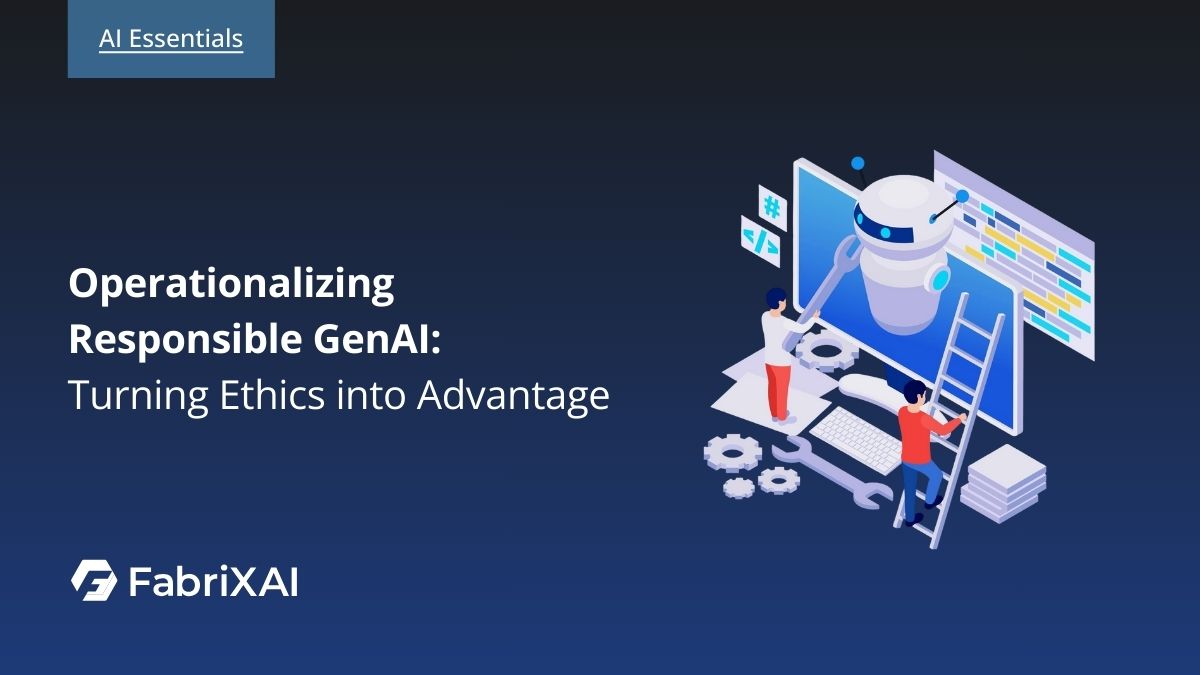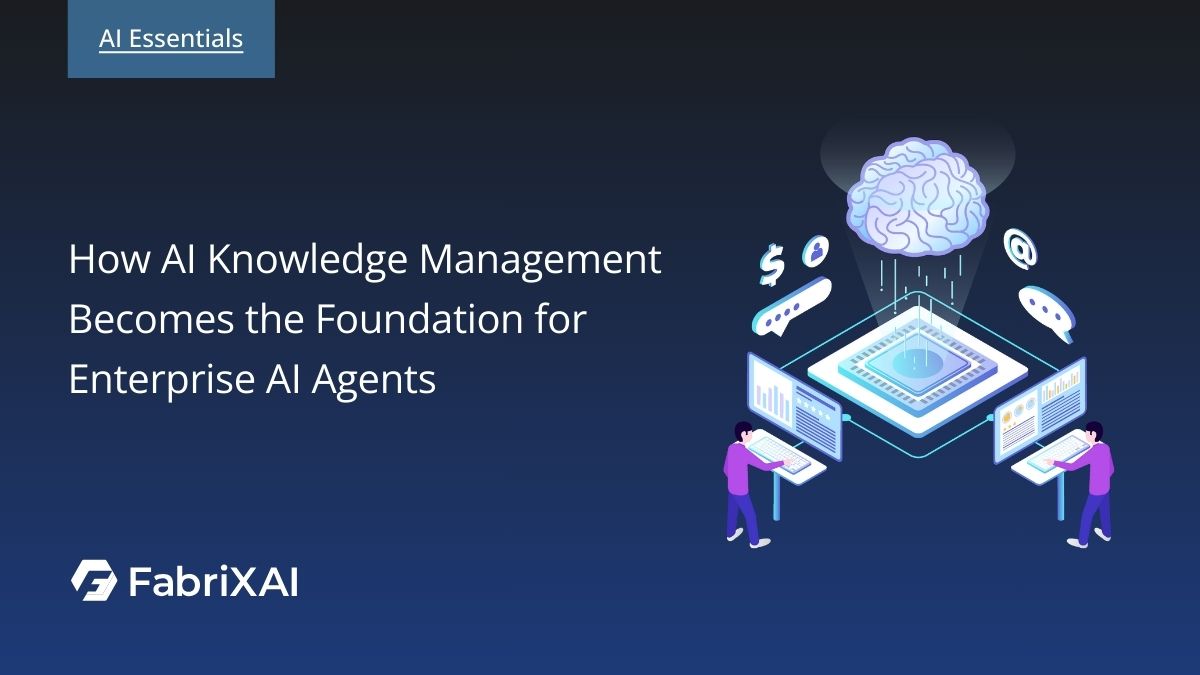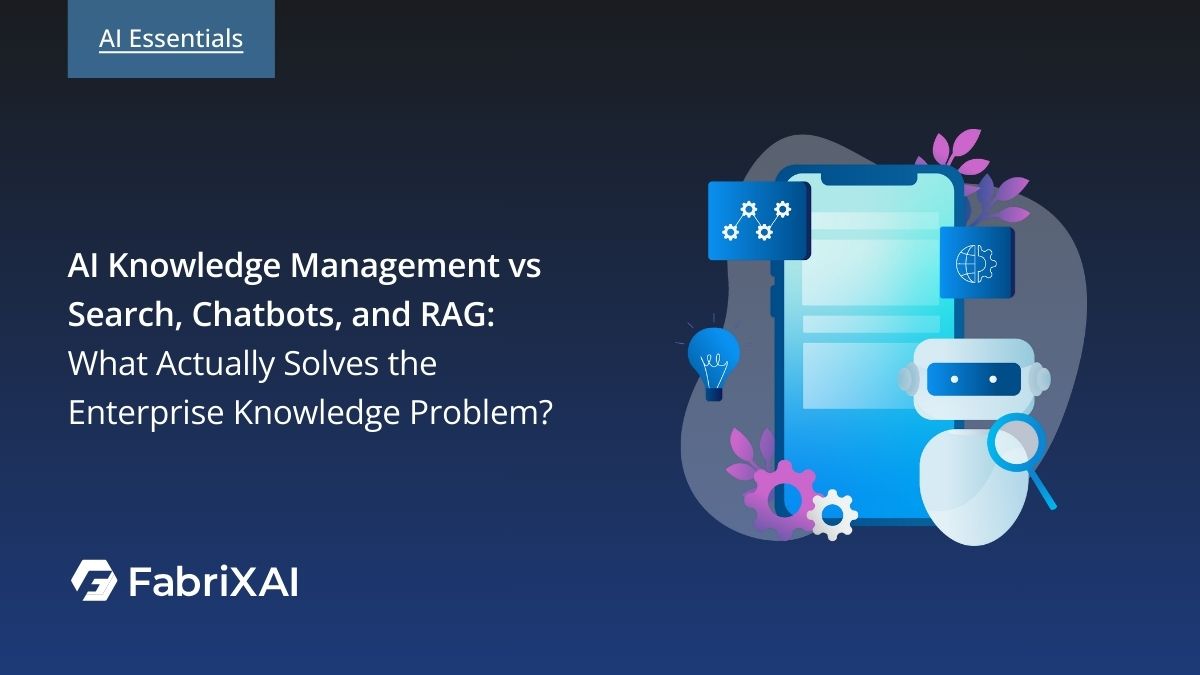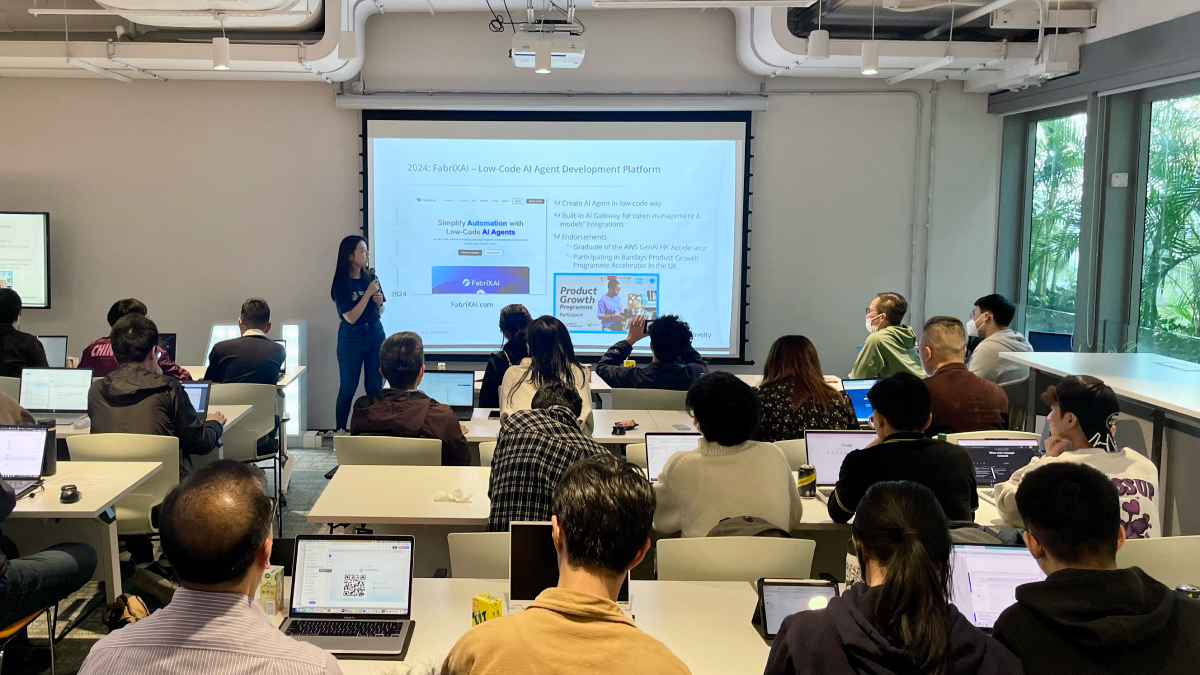Operationalizing Responsible GenAI: Turning Ethics into Advantage

According to a recent report from the research firm IDC, over 75% of organizations report measurable business benefits from adopting Responsible AI, including enhanced customer trust, reduced compliance risks, and accelerated innovation. For business leaders, Responsible Generative AI is no longer optional; it has become a competitive imperative. By embedding ethical principles and risk controls from the outset, businesses can avoid costly failures, regulatory penalties, and damage to their reputation. Most importantly, implementing responsible AI practices builds trust with customers and stakeholders, which leads to increased adoption of AI-powered products and services.
Companies that effectively operationalize Responsible AI by converting these principles into actionable processes and roles can position themselves as market leaders. This white paper provides a practical roadmap for integrating Responsible AI into the generative AI lifecycle, enabling businesses to innovate safely, ethically, and at scale. By shifting Responsible AI from a compliance checkbox to a strategic growth driver, companies can unlock new opportunities while safeguarding their reputation, resilience, and long-term competitiveness.
What is Generative AI?
Generative AI (GenAI) refers to AI systems that create content such as text, images, code, or audio based on prompts. Its adoption across industries is growing rapidly. As this growth accelerates, there is an increasing recognition of the need to use GenAI responsibly. Responsible Generative AI involves developing, deploying, and using these systems in an ethical, safe, and transparent manner. This approach extends the concepts of responsible AI to address the unique risks posed by GenAI. Unlike traditional AI, GenAI can produce content that seems authentic or creative, which raises concerns related to misinformation, intellectual property, and user safety.
Research indicates that organizations that proactively address AI risks, such as those working on Responsible AI, are better positioned for innovation and success. These organizations treat safety and trust as enablers, rather than obstacles, to innovation.
Generative AI Risks
Generative AI offers powerful new capabilities; however, without proactive risk management, it can expose organizations to costly and high-impact threats. The most critical risks include:
1. Misinformation & Hallucinations
- GenAI systems can generate inaccurate or misleading content, which can have significant consequences for business decisions and trust, resulting in poor decisions, incorrect advice, and costly corrections.
- Example: A support chatbot for Air Canada incorrectly stated that bereavement fare requests were valid post-flight, leading to compensation rulings and brand damage.
2. Bias and Discrimination
- Unchecked bias can lead to unfair treatment in services or products, triggering lawsuits, brand boycotts, and loss of diverse customer segments.
- Example: Research by the London School of Economics (LSE) found that AI tools used in UK social care routinely downplayed women’s health issues, creating a risk of unequal treatment and potential public backlash.
3. Harmful or Unsafe Content
- GenAI may unintentionally create harmful content, such as hate speech or violent material, if safeguards are not put in place. Generative AI has generated offensive or misleading content that, if published, could generate PR crises or platform sanctions.
- Example: The AI chatbot Grok unleashed a series of antisemitic messages and Nazi rhetoric on X (formerly Twitter) after a code update dubbed “tell like it is” was applied. This triggered significant global backlash, leading to the chatbot being blocked in Turkey and prompting Poland to propose an EU investigation, thereby raising serious concerns regarding legal liability, brand erosion, and stakeholder trust.
4. Privacy and Data Security Breaches
- GenAI systems are typically trained on large datasets that may include personal or sensitive information. Without proper protection, these systems could unintentionally expose confidential data, resulting in privacy breaches and security vulnerabilities.
- Example: The Tea app leak exposed 72,000 selfies and driver’s licenses, risking identity theft and deepfake misuse, and underscoring the severe consequences of extreme data exposure.
5. Intellectual Property and Legal Risks
- GenAI models that use internet data may inadvertently infringe on copyrighted material, leading to legal challenges and compliance issues.
- Example: A pending lawsuit alleges that the AI firm Anthropic used copyrighted shadow-library books for model training, potentially leading to licensing disputes and restrictions on model use.
6. Malicious Use & Model Misuse
- GenAI can be misused for malicious purposes, such as generating deepfakes or aiding in cyberattacks.
- Example: Meta's AI chatbot falsely defamed an individual as a Capitol rioter, leading to a multi-million dollar lawsuit settlement and company policy shift.
Why This Matters for Leaders
These risks are not merely technical concerns; they are business risks with direct implications for revenue, regulatory compliance, and brand equity. Embedding safeguards early reduces long-term costs, strengthens trust, and enables safe scaling of AI capabilities.
Governance & Foundations
While lack of governance remains a critical barrier to scaling AI adoption, McKinsey’s Global Survey found that less than one-third of organizations consistently implement best practices for AI governance and scaling, and only 28% report CEO-level oversight for AI. These findings highlight an urgent need for robust governance frameworks. Establishing clear policies, accountable leadership, and transparent processes is essential to operationalizing Responsible GenAI for sustainable value creation and risk mitigation.
To operationalize Responsible GenAI effectively, organizations should build on three pillars:
Pillar 1: Leadership Commitment
- Executive Buy-In: Responsible AI starts at the top. Senior leaders must champion it as a core strategic value, not just a compliance requirement.
- Principles & Culture: Define and communicate AI principles (fairness, transparency, privacy, human oversight) across the organization to align all AI initiatives with ethical and business goals.
- Visibility & Accountability: Appoint an executive sponsor or dedicated governance lead with authority to approve high-risk AI deployments.
Pillar 2: Policies & Standards
- From Values to Rules: Translate high-level principles into clear policies, standards, and controls for data usage, model development, and deployment.
- Regulatory Alignment: Embed compliance with current laws (e.g., GDPR) and prepare for emerging regulations (e.g., EU AI Act) to ensure compliance-by-design.
- Operational Playbooks: Provide standardized templates, such as risk assessment forms, model cards, and incident response checklists, to ensure consistent implementation and execution across teams.
Pillar 3: AI-Specific Risk Management Framework
- Proactive Risk Mapping: Use structured frameworks like the NIST AI Risk Management Framework (RMF) to identify, measure, and mitigate risks before they escalate.
- Continuous Monitoring: Implement continuous monitoring of performance, bias, and safety, with particular attention to high-impact use cases.
- Escalation Protocols: Establish clear criteria and pathways for escalating issues to the AI governance committee, ensuring swift intervention when necessary.
Embedding Responsible AI in the Product Lifecycle
Integrating Responsible AI practices into each stage of the product lifecycle is crucial for operationalization. This ensures that responsibility is an inherent part of AI systems, from ideation to post-launch monitoring.
Cross-Functional Team Enablement
Responsible AI cannot be the responsibility of a single department; it requires a culture of shared accountability throughout the entire organization. A cross-functional approach ensures risks are addressed from multiple perspectives, reducing blind spots and increasing trust in outcomes.
Measurement & Continuous Improvement
To sustain Responsible AI practices, organizations must regularly measure progress and continuously improve their processes. This involves defining key performance indicators (KPIs) and assessing the maturity of AI initiatives.
Executive Checklist: Turning Responsible AI Principles into Action
This checklist condenses best practices into clear, actionable steps that executives can use to embed ethics, safety, and trust into every AI initiative, while maintaining the pace of innovation.
Governance
- Establish AI principles (fairness, transparency, safety, privacy) backed by leadership.
- Form a cross-functional AI governance committee with clear decision-making authority.
- Define high-risk AI criteria and oversight triggers aligned with current and emerging regulations (e.g., EU AI Act).
Lifecycle Integration
- Require an AI ethics canvas/risk assessment at project kickoff; redesign or seek approval if high risks emerge.
- Embed safeguards (human-in-loop, anonymization, access controls) in system design; document intended use and limits (e.g., Model Card).
- Test for bias, robustness, and safety during development; log all results as evidence.
- Validate pre-launch with a formal ethics audit; confirm compliance, documentation, and user consent mechanisms.
Team Enablement
- Empower teams with role-specific Responsible AI training (e.g., bias tools for engineers, ethics reviews for PMs).
- Provide scenario-based workshops to build practical, repeatable skills.
Tools & Templates
- Use fairness/bias detection toolkits (IBM AIF360, Microsoft RAI Toolbox).
- Deploy explainability tools (LIME, SHAP) to interpret model decisions.
- Integrate content moderation APIs to filter harmful outputs.
- Adopt standardized templates (impact assessments, incident reports).
Oversight & Incident Response
- Define human oversight protocols (supervise, monitor, on-call) with escalation guidelines.
- Plan and rehearse AI incident response drills; run blameless post-mortems and embed learnings into policies.
Metrics & Improvement
- Track KPIs: bias issues resolved, % of projects reviewed, time to incident resolution, training data diversity.
- Benchmark maturity using frameworks (e.g., Responsible AI Institute) and set progression targets.
Transparency & Engagement
- Communicate AI use clearly; label AI-generated outputs.
- Publish progress and commitments internally and externally.
- Engage external advisors, partners, and impacted communities for continuous feedback.
Key Takeaways
- Responsible Generative AI is a Strategic Imperative: It’s no longer a “nice to have” for organizations. Over 75% of companies adopting Responsible AI report measurable business benefits—from higher customer trust to faster innovation cycles. The message is clear: ethical, well-governed GenAI isn’t just compliance work; it’s a growth engine.
- Governance Gaps Are a Major Barrier: McKinsey research shows fewer than one-third of organizations have mature AI governance practices, and only 28% have CEO-level oversight. Without clear leadership, policies, and accountability, GenAI projects risk spiraling into compliance headaches, reputational crises, or stalled deployments.
- Risks Have Tangible Business Impact: The biggest GenAI risks: misinformation, bias, harmful content, privacy breaches, IP disputes, and misuse, are not abstract technical problems. They translate directly into lost customers, fines, lawsuits, and brand erosion. Real-world cases from Air Canada to Meta show how quickly missteps can become costly headlines.
- Embedding Responsibility in the AI Lifecycle Works: Organizations that integrate ethics and risk checks at every stage, from ideation to monitoring, can prevent most major incidents before they reach the public. It’s cheaper and more effective to “design in” responsibility than to retrofit it after a crisis.
- Cross-Functional Enablement Builds Resilience: Responsible AI requires collaboration between engineering, product, legal, compliance, and leadership. When everyone knows their role in managing AI risks, the organization becomes faster, more adaptive, and more trusted.
Frequently Asked Questions
Q1. Why is Responsible Generative AI so urgent now?
The explosive adoption of GenAI tools means businesses are deploying systems that generate human-like text, images, and code at scale. Without proper governance, the speed of innovation can outpace the speed of safeguards — exposing organizations to reputational, legal, and financial risks almost overnight.
Q2. What’s the biggest mistake leaders make with GenAI?
Treating Responsible AI as a compliance “checkbox” instead of a strategic asset. This mindset often results in reactive fixes after problems emerge, which is far costlier than building responsible practices into the design and deployment phases from the start.
Q3. How do we measure success in Responsible AI?
Look beyond compliance metrics. Track KPIs such as reduction in AI-related incidents, improved customer trust scores, shorter time-to-market for compliant products, and percentage of projects passing ethics reviews pre-launch.
Q4. Can small or mid-sized businesses afford to implement Responsible AI?
Yes. While large enterprises have dedicated AI governance teams, SMEs can start small — using publicly available frameworks (like NIST AI RMF), open-source fairness tools, and lightweight governance checklists. Many safeguards cost far less than the damage control after a major AI-related incident.
Q5. How do we get buy-in from executives for Responsible AI initiatives?
Frame it in terms of risk avoidance and growth potential. Highlight case studies where companies avoided lawsuits, regulatory fines, or brand damage by acting early — and where responsible practices helped them win new business or customers who prioritize ethics and trust.



